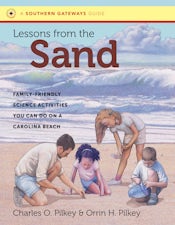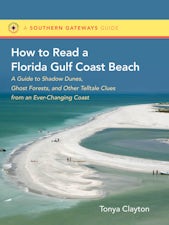How to Read a North Carolina Beach
Bubble Holes, Barking Sands, and Rippled Runnels
By Orrin H. Pilkey, Tracy Monegan Rice, William J. Neal
180 pp., 6 x 8, 8 color and 79 b&w photos, 10 illus., 4 tables, 2 maps, bibl., index
-
Paperback ISBN: 978-0-8078-5510-2
Published: March 2004 -
E-book EPUB ISBN: 978-1-4696-1967-5
Published: June 2014 -
E-book PDF ISBN: 979-8-8908-7827-4
Published: June 2014
Southern Gateways Guides
Buy this Book
- Paperback $20.00
- E-Book $12.99
Orrin Pilkey, Tracy Monegan Rice, and William Neal explore large-scale processes, such as the composition and interaction of wind, waves, and sand, as well as smaller features, such as bubble holes, drift lines, and black sands. In addition, coastal life forms large and small--from crabs and turtles to microscopic animals--are all discussed here. The concluding chapter contemplates the future of North Carolina beaches, considering the threats to their survival and assessing strategies for conservation. This indispensable beach book offers vacationers and naturalists a single source for learning to appreciate and preserve the natural features of a genuine state treasure.
Southern Gateways Guide is a registered trademark of the University of North Carolina Press
About the Authors
Orrin H. Pilkey is James B. Duke Professor Emeritus of Earth Sciences at Duke University.
For more information about Orrin H. Pilkey, visit
the
Author
Page.
Tracy Monegan Rice is a coastal geologist and ecologist working in private consulting.
For more information about Tracy Monegan Rice, visit
the
Author
Page.
William J. Neal is professor emeritus of geology at Grand Valley State University in Allendale, Michigan.
For more information about William J. Neal, visit
the
Author
Page.



